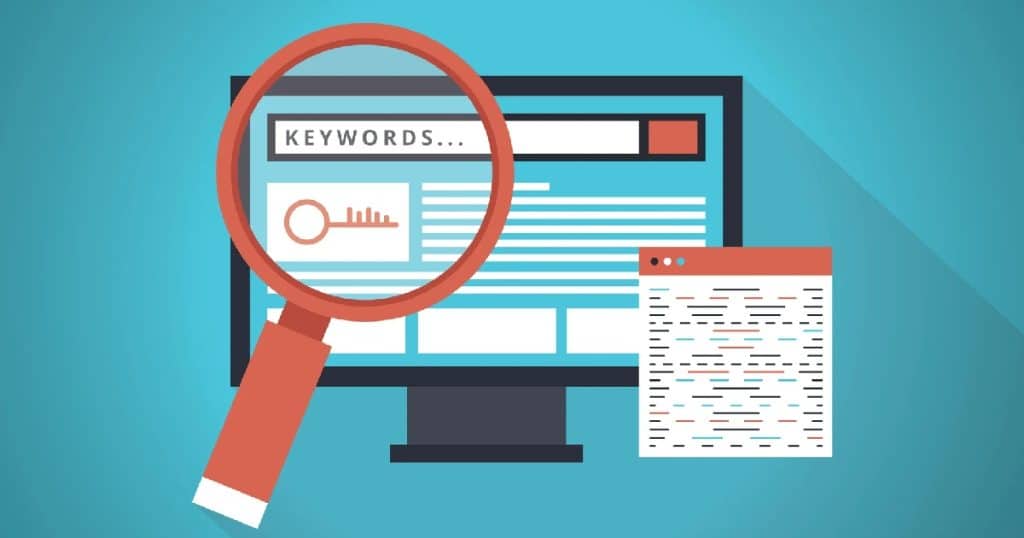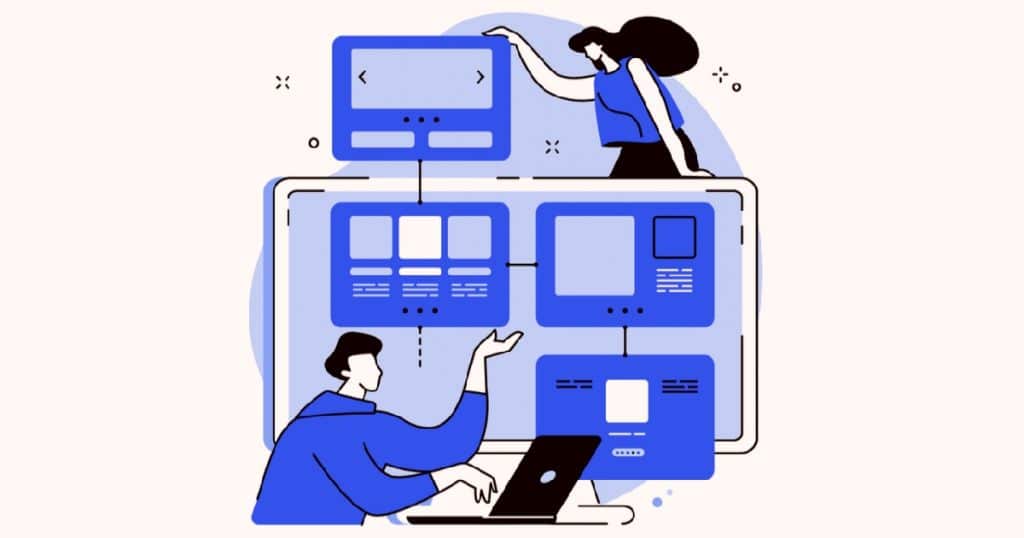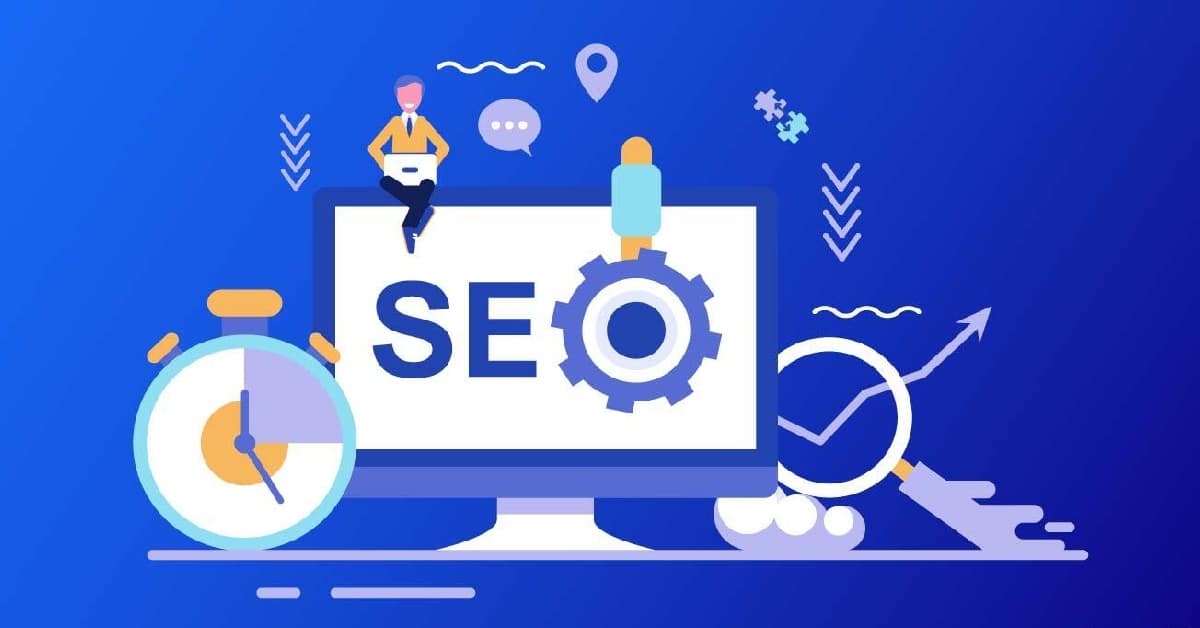SEO, or search engine optimization, is the process of optimizing your website to rank higher in search engine results pages (SERPs). However, with so many different strategies and tactics available, it can be easy to make mistakes that can harm your website’s SEO. In this article, we will discuss the top 10 most harmful SEO mistakes to avoid in 2023.
1- Keyword stuffing:

One of the most common and harmful SEO mistakes is keyword stuffing. This is the practice of cramming as many keywords as possible into your website’s content, meta tags, and other elements. This can not only make your content difficult to read, but it can also trigger search engine penalties. For example, if you have a page about “red sneakers” and you use the phrase “red sneakers” excessively in the page’s content, meta tags, and title, it may cause the search engine to penalize the page and not rank it as high as it could have.
Keyword stuffing can also harm the user experience. When a user lands on a page that is stuffed with keywords, they may find the content difficult to read and may quickly leave the page, which can lead to a high bounce rate. A high bounce rate can be a negative signal to the search engine, indicating that the page is not providing the user with a good experience.
To avoid keyword stuffing, make sure to use keywords in a natural and organic way. Use them in the title, meta tags, and throughout the content, but don’t overdo it. Instead, focus on creating high-quality, informative, and engaging content that will provide value to your users.
2- Duplicate content:
Another harmful SEO mistake is having duplicate content on your website. Search engines view duplicate content as a sign of low-quality and may penalize your website for it. For example, if you have a page about “red sneakers” and another page with the same content but with a different URL, it can cause the search engine to not rank one of the pages as high as it could have.
Duplicate content can also dilute the authority of your website. If a search engine finds multiple pages with the same content on your website, it may not know which page to rank higher. This can lead to lower rankings for all of the pages, which can harm your website’s overall SEO.
To avoid duplicate content, make sure to always use unique and original content on your website. If you need to use the same content on multiple pages, use a canonical tag to tell the search engine which page is the original. Also, make sure to use 301 redirects for any pages that are no longer in use to avoid any broken links.
3- Broken links:
Broken links, or links that no longer lead to a valid page, can harm your website’s SEO. Search engines view broken links as a sign of poor website maintenance, which can lead to penalties. For example, if a search engine crawls a page on your website and finds a link that leads to a 404 error page, it can negatively impact the page’s ranking.
Broken links can also harm the user experience. When a user clicks on a link that leads to a 404 error page, they may quickly leave the page, which can lead to a high bounce rate. A high bounce rate can be a negative signal to the search engine, indicating that the page is not providing the user with a good experience.
To avoid broken links, make sure to regularly check your website for broken links and fix them as soon as possible. You can use tools like Ahrefs or SEMrush to help you find and fix broken links. Also, make sure to use 301 redirects for any pages that are no longer in use to avoid any broken links.
4- Unoptimized images:
Images can be a great way to enhance the user experience on your website, but if they are not optimized properly, they can harm your website’s SEO. For example, if you have an image on a page that is not compressed and has a large file size, it can slow down the page’s load time, which can lead to a poor user experience and lower search engine rankings.
Unoptimized images can also harm your website’s overall performance. Large file sizes can slow down your website, which can lead to a higher bounce rate and lower search engine rankings. It can also lead to increased hosting costs, as the larger images will take up more space on your server.
To avoid unoptimized images, make sure to always use descriptive and relevant file names, and compress your images to reduce their file size. You can use tools like TinyPNG or Compressor.io to compress your images. Additionally, you can use lazy loading techniques to ensure that images only load as the user scrolls down the page, which can improve page load times.
5- Not using header tags:
Header tags, such as H1 and H2 tags, are used to organize and structure your content. If you do not use them properly, it can harm your website’s SEO. For example, if you have a page that doesn’t use any header tags, the search engine may have a hard time understanding the structure and hierarchy of the content, which can lead to lower rankings.
Not using header tags can also harm the user experience. When a user lands on a page that doesn’t use header tags, they may find it difficult to understand the structure and hierarchy of the content. This can lead to a poor user experience and a higher bounce rate.
To avoid not using header tags, make sure to use header tags correctly and consistently throughout your website. Use H1 tags for the main title of the page, and H2 and H3 tags for subheadings. Also, make sure to use keywords in your header tags, as this can help search engines understand the content of the page.
6- Not using alt tags:
Alt tags, or alternative text tags, are used to describe images for search engines. If you do not use them, search engines will not be able to understand the content of your images, which can harm your website’s SEO. For example, if you have an image on a page, but the image doesn’t have an alt tag, the search engine may not understand what the image is about, which can lead to lower rankings.
Not using alt tags can also harm the user experience. When a user lands on a page and the images don’t have alt tags, they may find it difficult to understand the content of the images. This can lead to a poor user experience and a higher bounce rate.
To avoid not using alt tags, make sure to always use alt tags on all of your images. Use descriptive and relevant keywords in your alt tags, as this can help search engines understand the content of the images. Additionally, make sure to use alt tags on all images, including infographics, diagrams, and charts, to ensure that the search engines can understand the content of all images on the page.
7- Not using internal linking:

Internal linking, or linking to other pages within your website, can help search engines understand the structure and hierarchy of your website. If you do not use internal linking, it can harm your website’s SEO. For example, if you have a page on your website, but it doesn’t have any internal links, the search engine may have a hard time understanding how the page relates to other pages on your website, which can lead to lower rankings.
Not using internal linking can also harm the user experience. When a user lands on a page and there are no internal links, they may find it difficult to navigate to other relevant pages on your website. This can lead to a poor user experience and a higher bounce rate.
To avoid not using internal linking, make sure to use internal linking throughout your website. Use relevant and descriptive anchor text for your internal links, as this can help search engines understand the relevance of the linked pages. Also, make sure to link to relevant pages within your website, as this can help users easily find the information they are looking for.
8- Not using external linking:
External linking, or linking to other websites, can help search engines understand the relevance and authority of your website. If you do not use external linking, it can harm your website’s SEO. For example, if you have a page on your website, but it doesn’t have any external links, the search engine may have a hard time understanding how the page relates to other websites, which can lead to lower rankings.
Not using external linking can also harm the user experience. When a user lands on a page and there are no external links, they may find it difficult to find additional information about the topic. This can lead to a poor user experience and a higher bounce rate.
To avoid not using external linking, make sure to use external linking throughout your website. Use relevant and authoritative websites as external links, as this can help search engines understand the relevance and authority of your website. Also, make sure to use descriptive and relevant anchor text for your external links, as this can help users understand the context of the linked pages.
9- Not having a mobile-friendly website:
As more and more people use mobile devices to access the internet, it is important to have a mobile-friendly website. If your website is not mobile-friendly, it can harm your website’s SEO. For example, if your website is not optimized for mobile devices, it may not display properly on mobile devices, which can lead to a poor user experience and lower search engine rankings.
Not having a mobile-friendly website can also harm your website’s overall performance. Mobile devices have smaller screens and slower internet speeds, which can slow down your website. This can lead to a higher bounce rate and lower search engine rankings.
To avoid not having a mobile-friendly website, make sure to always use responsive design and ensure that your website is optimized for mobile devices. Use a mobile-responsive theme or template, and test your website on various mobile devices to ensure that it displays properly. Also, make sure to optimize your images and other media for mobile devices, as this can improve page load times.
10- Not using analytics:
Analytics can be a great way to track the performance of your website and identify areas for improvement. If you do not use analytics, it can be difficult to understand how your website is performing, which can harm your website’s SEO. For example, if you don’t use analytics, you may not know how many people are visiting your website, where they are coming from, and what pages they are visiting, which can make it difficult to improve your website’s performance.
Not using analytics can also harm your website’s user experience. Without analytics, it can be difficult to understand how users are interacting with your website, which can make it difficult to improve the user experience. For example, if you don’t use analytics, you may not know which pages are causing high bounce rates or which pages are not providing users with the information they need, which can make it difficult to improve the user experience.
To avoid not using analytics, make sure to use analytics tools such as Google Analytics to track the performance of your website. Use analytics to track metrics such as website traffic, bounce rate, and conversion rate. Also, use analytics to track user behavior, such as which pages are most popular, how long users are spending on your website, and which pages are causing high bounce rates. This information can help you identify areas for improvement and make data-driven decisions to improve your website’s performance.
In conclusion, SEO is an important part of any online business, and it is important to avoid mistakes that can harm your website’s performance. By avoiding these common and harmful SEO mistakes, you can ensure that your website is optimized for search engines and provides a positive user experience. Remember, the key is to always focus on creating high-quality, informative and engaging content that will provide value to your users, and use the right techniques to optimize your website’s performance.
Our related articles to SEO Mistakes:
 Anas is our go-to copywriter with a knack for crafting persuasive and high-converting eCommerce landing pages. His passion for words and understanding of consumer psychology helps turn visitors into loyal customers. When he's not refining his copy, Anas enjoys exploring the latest digital marketing trends and experimenting with new writing techniques. His blend of creativity and strategic thinking makes him an indispensable part of our energetic team.
Anas is our go-to copywriter with a knack for crafting persuasive and high-converting eCommerce landing pages. His passion for words and understanding of consumer psychology helps turn visitors into loyal customers. When he's not refining his copy, Anas enjoys exploring the latest digital marketing trends and experimenting with new writing techniques. His blend of creativity and strategic thinking makes him an indispensable part of our energetic team.












